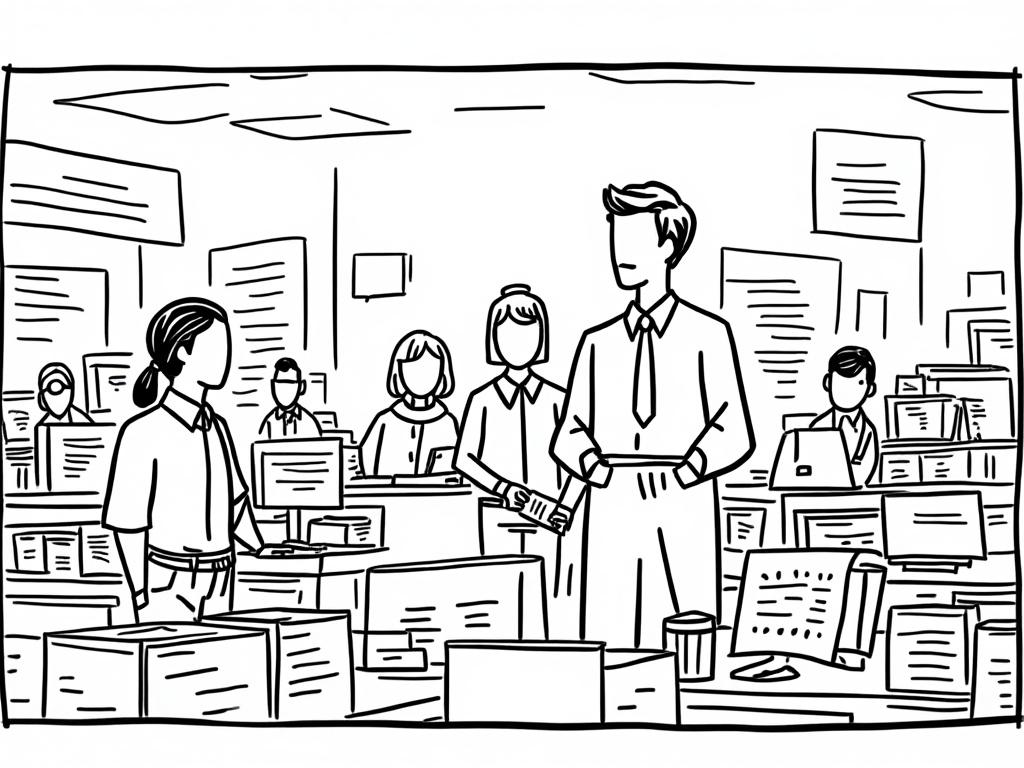
SmartJustice: UAE’s Digital Court Services – Revolutionizing Legal Access in the Digital Age
Reading time: 8 minutes
Ever wondered how a desert nation transformed into a global leader in digital justice? The UAE’s SmartJustice initiative isn’t just another government digitization project—it’s a blueprint for how technology can make legal systems more accessible, efficient, and fair for everyone.
Table of Contents
- Understanding SmartJustice: Beyond Digital Convenience
- Core Features That Transform Legal Access
- Real-World Implementation: Success Stories
- Overcoming Digital Justice Challenges
- UAE vs. Global Digital Court Systems
- Your Digital Justice Roadmap
- Frequently Asked Questions
Understanding SmartJustice: Beyond Digital Convenience
Let’s cut through the technical jargon. SmartJustice represents the UAE’s comprehensive digital transformation of its judicial system, launched as part of the broader UAE Vision 2071 initiative. But here’s what makes it truly revolutionary: it’s not just about moving paperwork online—it’s about reimagining how justice is delivered in the 21st century.
The reality check: Traditional court systems worldwide face similar challenges—lengthy procedures, accessibility barriers, and resource constraints. The UAE recognized these pain points early and decided to leapfrog conventional solutions.
The Strategic Vision Behind SmartJustice
Picture this scenario: A small business owner in Dubai needs to resolve a commercial dispute. Instead of taking weeks off work for multiple court visits, they can now initiate proceedings, submit evidence, and even attend hearings virtually. This isn’t science fiction—it’s everyday reality in the UAE’s digital courts.
The system encompasses three critical pillars:
- Accessibility: 24/7 digital access to court services
- Efficiency: AI-powered case management reducing resolution times by up to 70%
- Transparency: Real-time case tracking and automated updates
Breaking Down the Numbers
According to the UAE Ministry of Justice, SmartJustice has processed over 2.3 million digital transactions since its full implementation in 2019. More importantly, 89% of users report higher satisfaction levels compared to traditional court processes.
Core Features That Transform Legal Access
Well, here’s the straight talk: Digital transformation isn’t just about fancy interfaces—it’s about solving real problems. Let’s explore the features that actually matter.
AI-Powered Case Management
The system uses artificial intelligence to categorize cases, predict timelines, and even suggest relevant precedents. For family court matters, this means faster resolution of custody arrangements. For commercial disputes, it translates to predictable scheduling and resource allocation.
Real-world impact: Dubai Courts reported a 65% reduction in case backlog within two years of implementing AI-assisted scheduling.
Virtual Hearing Capabilities
Remote hearings aren’t just a pandemic response—they’re a permanent feature that addresses geographical and mobility challenges. The platform supports multi-language interpretation, document sharing, and secure authentication.
Pro Tip: Virtual hearings work best for procedural matters and initial consultations. Complex evidence presentation still benefits from in-person proceedings, creating a hybrid model that maximizes efficiency.
Integrated Payment and Fee Management
Gone are the days of separate trips to pay court fees. The platform integrates with major UAE banks and digital payment systems, automatically calculating fees based on case type and providing transparent cost breakdowns.
Digital Court Services Adoption Rates
92%
78%
85%
89%
Real-World Implementation: Success Stories
Let’s dive deep into actual outcomes rather than theoretical benefits. Here are three compelling case studies that demonstrate SmartJustice’s practical impact.
Case Study 1: Streamlining Commercial Disputes
A multinational corporation faced a contract dispute with a local supplier involving AED 2.8 million. Using traditional methods, similar cases averaged 18 months for resolution. Through SmartJustice’s commercial court digital pathway:
- Timeline: 7 months from filing to judgment
- Cost reduction: 40% lower legal fees due to efficient processes
- Documentation: All evidence submitted and tracked digitally
“The transparency and predictability of the digital system allowed us to make informed business decisions throughout the process,” noted the company’s legal counsel.
Case Study 2: Family Court Efficiency
A custody arrangement modification that typically required multiple in-person hearings was resolved through a combination of virtual consultations and digital evidence submission. The process took 3 weeks instead of the usual 4-6 months.
Case Study 3: Small Claims Revolution
Small business owners can now file claims up to AED 20,000 entirely online. One restaurant owner recovered unpaid invoices totaling AED 15,000 within 45 days, spending less than AED 500 in total fees—a fraction of traditional legal costs.
Overcoming Digital Justice Challenges
Ready to understand the real obstacles? Digital transformation isn’t without hurdles, and the UAE’s approach to addressing them offers valuable lessons.
The Digital Divide Challenge
The problem: Not all court users are tech-savvy, particularly older citizens and those from diverse cultural backgrounds.
The solution: The UAE implemented a multi-tiered support system:
- Physical help desks in major court buildings
- Multi-language support (Arabic, English, Hindi, Urdu)
- Video tutorials and step-by-step guides
- Telephone assistance hotlines
Security and Privacy Concerns
Sensitive legal information requires robust protection. The UAE addressed this through:
- End-to-end encryption for all communications
- Biometric authentication options
- Regular security audits by international cybersecurity firms
- Compliance with international data protection standards
Legal Precedent and Digital Evidence
Courts had to establish new protocols for digital evidence authenticity and remote testimony credibility. The solution involved creating comprehensive digital evidence standards and training judicial staff on technology-assisted proceedings.
UAE vs. Global Digital Court Systems
How does SmartJustice stack up against international peers? Let’s examine the competitive landscape.
| Feature | UAE SmartJustice | Singapore Courts | UK Courts | Estonia e-Court |
|---|---|---|---|---|
| Digital Filing Coverage | 95% | 88% | 75% | 98% |
| AI Integration Level | High | Medium | Low | Medium |
| Multi-language Support | 6 languages | 4 languages | Limited | 2 languages |
| Average Case Resolution Time | -65% | -45% | -30% | -70% |
| User Satisfaction Rate | 89% | 82% | 71% | 91% |
Key insight: While Estonia leads in pure digital adoption, the UAE excels in AI integration and multilingual accessibility—crucial factors for its diverse population.
Your Digital Justice Roadmap
The right preparation isn’t just about understanding SmartJustice—it’s about leveraging its capabilities to resolve legal matters efficiently and cost-effectively. Whether you’re a business owner, legal professional, or individual seeking justice, here’s your strategic action plan:
Immediate Implementation Steps
- Register for Digital Access: Create your UAE Pass digital identity if you haven’t already—this single credential unlocks all government digital services, including court platforms.
- Assess Your Legal Needs: Determine which services apply to your situation—commercial disputes, family matters, or small claims each have optimized digital pathways.
- Gather Digital Documentation: Organize your evidence and supporting documents in digital formats. The system accepts PDF, image files, and authenticated digital signatures.
- Explore Alternative Dispute Resolution: Before filing formal cases, investigate SmartJustice’s mediation and arbitration services—often faster and more cost-effective.
- Connect with Digital-Ready Legal Counsel: If representation is needed, choose lawyers experienced with the digital court system to maximize efficiency benefits.
Looking ahead, the UAE plans to integrate blockchain technology for immutable legal records and expand AI capabilities to predict case outcomes with greater accuracy. These developments will further streamline legal processes and provide unprecedented transparency.
The bigger picture: SmartJustice represents more than technological advancement—it’s democratizing access to justice in ways previously impossible. As other nations observe and adapt the UAE model, we’re witnessing the birth of a global standard for digital legal systems.
How will you leverage these digital justice capabilities to protect your interests and streamline your legal affairs in an increasingly connected world?
Frequently Asked Questions
Can I handle my entire legal case online without visiting a courthouse?
For many case types, yes. Small claims, uncontested family matters, and certain commercial disputes can be resolved entirely online. However, complex cases involving extensive evidence or witness testimony may still require some in-person proceedings. The system provides clear guidance on which aspects can be handled digitally versus when physical presence is necessary.
What happens if I’m not comfortable with technology or don’t speak Arabic/English well?
The UAE has established comprehensive support systems including physical help desks at major courthouses, multilingual telephone assistance, and trained staff who can guide you through digital processes. The platform supports six languages and offers simplified interfaces for different user skill levels. Additionally, family members or legal representatives can assist with digital filing on your behalf.
How secure is my personal and legal information in the digital court system?
SmartJustice employs bank-level security measures including end-to-end encryption, biometric authentication, and regular security audits by international cybersecurity firms. The system complies with international data protection standards and maintains separate secure servers for sensitive legal documents. Your information is actually more secure in the digital system than traditional paper-based processes, which can be lost or accessed inappropriately.

Article reviewed by Diego Navarro, Retirement Portfolio Manager | Safe & Steady Growth Strategies, on June 4, 2025



